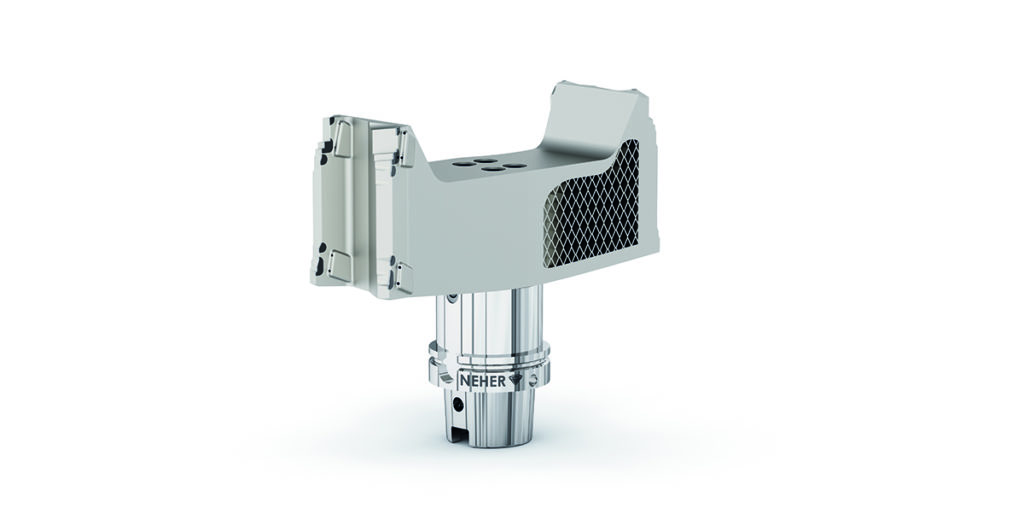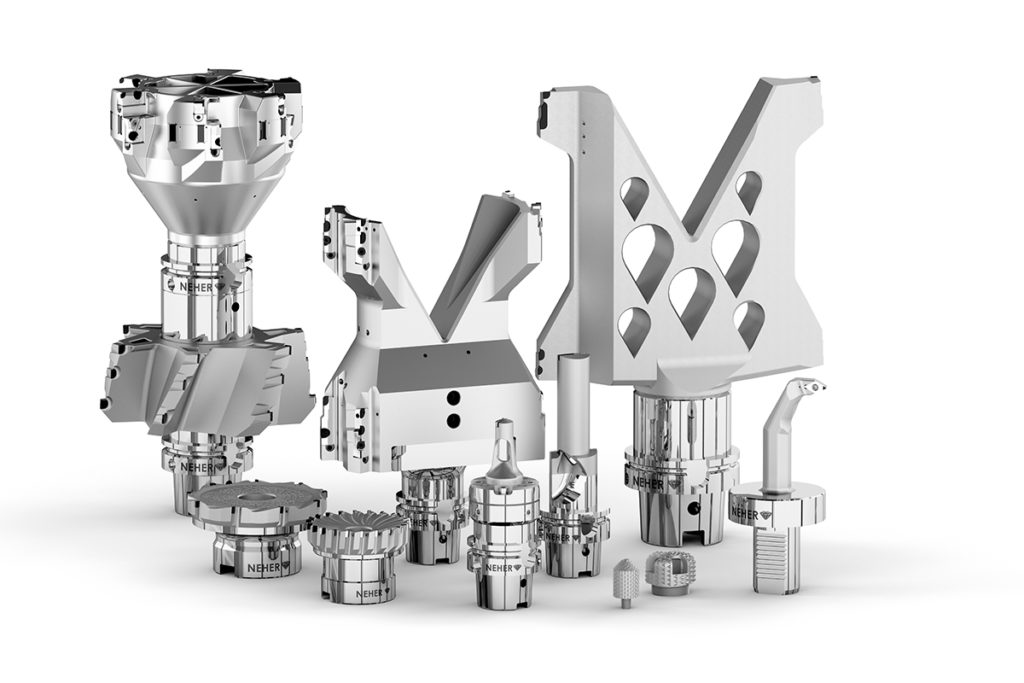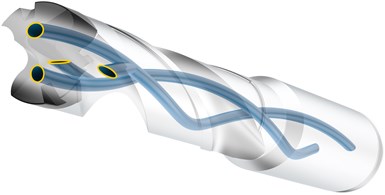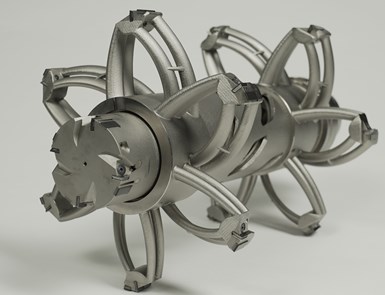According to the “Market Opportunities for Additive Manufacturing in the General Industry and Tooling Sector 2020-2029” report from SmarTech Analysis, 3D printing for industrial manufacturing is expected to generate $5.48 billion in total revenue by 2029. One application that is continuing to gain traction is the additive manufacturing (AM) of cutting tools. So, why is 3D printing shaking up the world of cutting tools?
3D Printing Makes Large Cutting Tools More Manageable
One of the downsides of manufacturing large components, such as those for the automotive and aerospace industries, is that bigger parts require bigger cutting tools. However, since the tools are also heavier, there’s a risk of spindle damage or that the tool may fall out of the machine during use.
At least one company has found a workaround for that issue by relying on 3D printing. Star SU Neher uses 3D printing to make the cutting tools weigh less, perform better and last longer than their non-3D-printed counterparts.

By designing in lattice structures, the weight of the tool can be cut by as much as 30 percent. Image courtesy of Star SU Neher.
One of the company’s tool designers mentioned that adding internal lattice structures cuts their products weight by 30% without adversely affecting torsional strength. Plus, company representatives custom-make most of their cutting tools to meet individual components’ needs. 3D printing enables that flexibility.
One of the reasons why the company’s 3D-printed cutting tools last longer is through the incorporation of a cooling channel, a technique that is increasingly used in 3D printing cutting tools. Typically, such channels are created via drilling, a method with limited effectiveness. With AM, channels can be designed directly into the part, improving the tool’s overall effectiveness. The increased flow of coolant can raise metal removal rates by as much as 30%.

3D printing makes it possible to reduce the weight of large cutting tool heads to limit the changes of damage or slippage in a machine tool part. Image courtesy of Star SU Neher.
The 3D printing of large cutting tools is not necessarily faster than creating them through more conventional methods. It can still take up to 24 hours to produce a component that takes up the whole print bed with its size. However, given the other advantages, it can often make good business sense to pursue 3D printing.
3D Printing Can Promote Better Wear-Resistance
Cutting tool manufacturers working with clients in certain industries, such as oil and gas and defense, often need to satisfy the need for wear-resistant tools. Cutting tool maker Kennametal specializes in products made from tungsten carbide. The company has an in-house line of products crafted from that material. Similar to Star SU’s application, the printing process allows for the formation of fluid cooling channels within the tools. Due to the design freedom of AM, 3D those pathways can be curved or branched in ways that other manufacturing methods could not accomplish.

Kennametal is able to 3D print drill bodies with interior cooling channels. Image courtesy of Kennametal.
While Kennametal relies on both metal binder jetting and powder bed fusion (PBF), some of the cutting tools are 10 millimeters or smaller in diameter and require PBF. Representatives say it gives them an economical way to produce tools and meet client needs. Weight reduction is also a possibility. In one instance, a 3D printed boring device used for electric vehicle parts production was 15 to 20 pounds lighter than those made with conventional methods.

3D printing made it possible to cut the weight of this boring tool for manufacturing electric vehicle parts by 15 to 20 pounds. Image courtesy of Kennametal.
3D Printing Helps Revolutionize Cutting Tools
Cutting tools featuring 3D printed components is not yet a widespread practice, but it’s a technology worth exploring. As of now, 3D printing is often less expensive and sometimes faster than conventional methods, depending on the application.
AM won’t replace common methods for producing most cutting tools anytime soon. Many ongoing efforts are still in the early stages and manufacturers will almost certainly find instances where 3D printing is not an appropriate way of producing specific cutting tool types.
The technology is a particular good candidate for tools that have complex shapes. However, when the pieces are large parts with comparably regular geometries, it may make more sense to buy those off the shelf than to use 3D printers to produce them.
Another thing to remember is that, since 3D printing as a tool-manufacturing method is relatively new, decision-makers may want to see how it has paid off for similar companies before giving the go-ahead to invest in it. Once they see the results, they may be more willing to gradually scale up the process.
Subscribe to Our Email Newsletter
Stay up-to-date on all the latest news from the 3D printing industry and receive information and offers from third party vendors.
You May Also Like
Print to Wear: Steve Madden Goes 3D with Hilos
Footwear is evolving. That’s how Hilos’ CEO sees it, envisioning footwear as the next big industry set to scale through 3D printing. During this year’s TechCrunch Disrupt Startup Battlefield 200...
3D Printing News Briefs, October 5, 2024: JIMTOF, Sensors, Façades, & More
In 3D Printing News Briefs today, 3D Systems announced a major milestone in the commercialization of the Oqton Manufacturing OS, the 32nd Japan International Machine Tool Fair (JIMTOF) announced a...
Daring AM: The Future of Pathogen Detection is 3D Printed
Pathogen detection is essential in many industries, from healthcare to food safety. The faster harmful bacteria or other microorganisms can be detected, the better we can protect people from diseases...
A$AP Rocky Debuts New 3D Printed PUMA Shoes
Rapper and producer A$AP Rocky has collaborated with PUMA and Carbon to create a shoe. The Mostro 3D “Red” is available today at Dover Street Market, Nubian, and SNEAKERSNSTUFF, as...





































